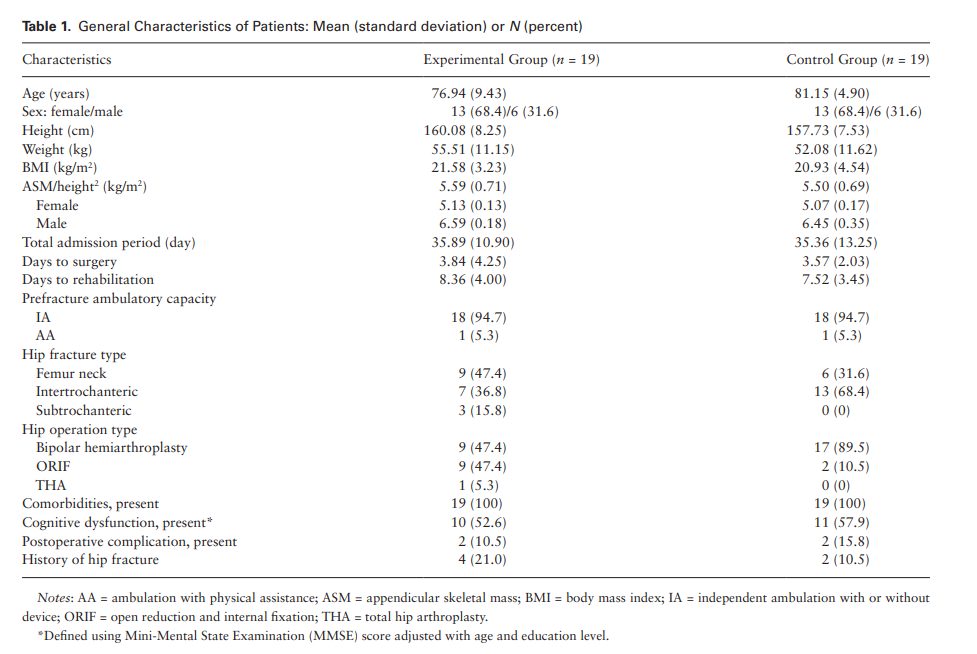Background: To compare long-term effects of anti-gravity treadmill combined with conventional rehabilitation and conventional rehabilitation after hip fracture in patients with sarcopenia.
Methods: 45 patients were randomly allocated to anti-gravity treadmill combined with conventional rehabilitation (experimental group) or conventional rehabilitation (control group) for 10 consecutive working days. Participants were evaluated prior to treatment, 3 weeks, 3 months, and 6 months after treatment. Outcome measurement included Koval walking ability scores functional ambulatory category , Berg Balance Scale, Korean version of Mini-Mental Status Examination, Euro Quality of Life Questionnaire Five Dimensional Classification, Korean version of modified Barthel index, and grip strength.
Article cited in:The Journals of Gerontology: Series A, Volume 75, Issue 10, October 2020, Pages e173–e181.
Article link:https://doi.org/10.1093/gerona/glaa158
Recently, the number of hip fractures are increasing rapidly among the elderly population due to the aging of the population. Hip fractures in the elderly cause increased morbidity and mortality, resulting in medical and socioeconomic burdens.
An anti-gravity treadmill , which provides a body weight support during treadmill exercise, was used for rehabilitation of a pelvic injury via bone healing and remodeling . We, therefore, conducted a randomized controlled trial to compare the long term effects of anti-gravity treadmill combined with conventional rehabilitation and conventional rehabilitation after hip fracture surgery in patients with sarcopenia.

Discussion :Based on the type of hip operation, the experimental group underwent open reduction and internal fixation more frequently than the control group. The control group showed more favorable conditions. Nonetheless, the main findings of this study suggest that anti-gravity treadmill combined with conventional rehabilitation more effectively improved the primary and secondary outcomes after 6 months.
Conclusions :To our knowledge, this is the first randomized controlled trial comparing the long term (6 months) effects of anti-gravity treadmill combined with conventional rehabilitation and conventional rehabilitation after hip fracture surgery in patients with sarcopenia even though it is a small sample study. It is concluded that both groups were improved after intervention. As additional benefits were evident among those who carried out anti-gravity treadmill, it may be appropriate for patients with sarcopenia after hip fracture surgery.